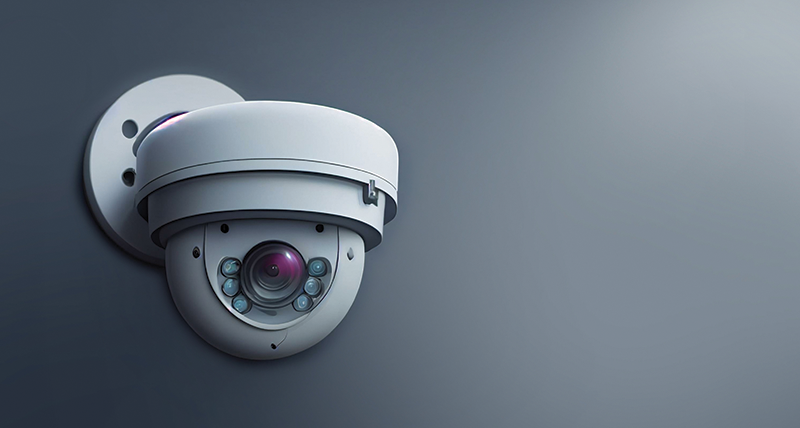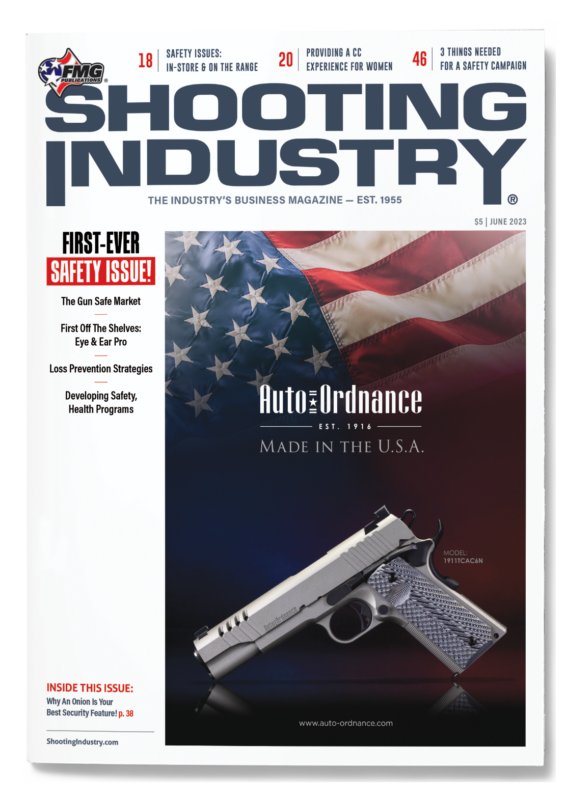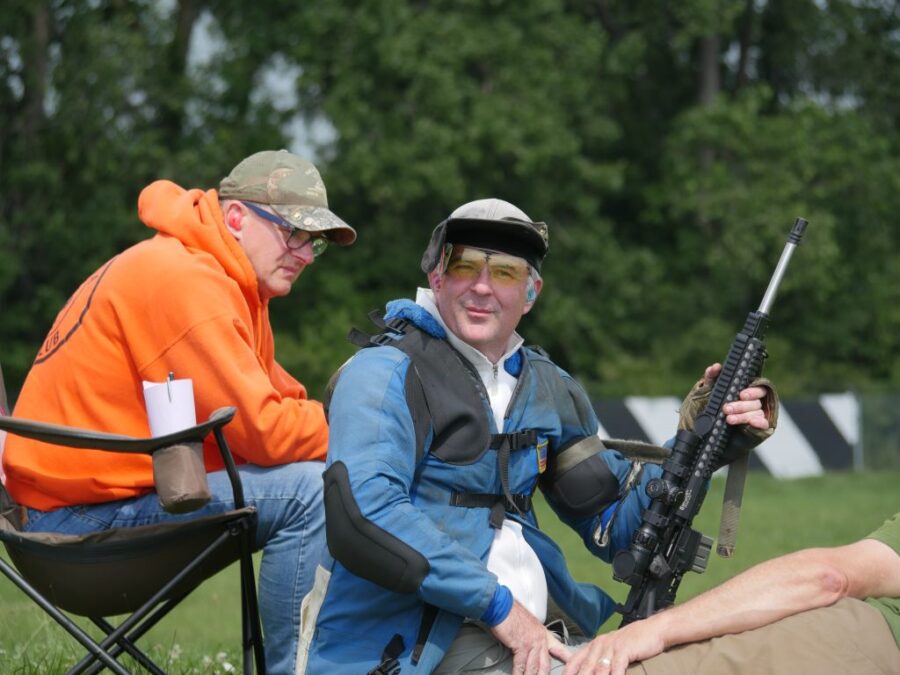Protect Your Inventory
Loss Prevention Is Critical To Independent Firearms Retailers
Gun shop owners are uncomfortable discussing theft, but theft is unavoidable in an industry that trades in highly valuable, highly desired merchandise.
Don’s Weaponry in North Little Rock, Ark., is one of the last independent, dedicated gun stores in central Arkansas. It’s in a gritty part of town about 100 yards from a railway, but it’s not clear which side of the tracks is the wrong side. Nevertheless, the store’s staff treats every visitor with respect, but always with an eye to security.
Lyn Forester, the manager of Don’s Weaponry, said theft is a major threat for a small, independent gun store. If losses exceed a certain threshold over a sustained period, it can influence a retailer’s survivability.
“This store has been here since 1985,” Forester said. “In the Little Rock area in 1985, you had Little Rock Arms, The Gun Exchange, Sipes Gun Shop, Razorback Shooting Supplies and R & L Gun Shop. They are all gone except us. It’s really tricky for a real gun store to stay in business, and theft is always a big problem.”
Every gun store has regular customers, but the location of Don’s Weaponry draws customers from at least four counties. It’s impossible to know everyone who comes through the door, and some might not visit again. It’s important to establish a relationship to serve the customer, but also to protect the business’s interests.
“When we enter people in our POS (Point of Sale), it’s amazing how many thousands upon thousands we enter in any given six-month period,” Forester shared. “You’d think we’d run out of people in a state as small as Arkansas, but it’s not unusual for us to see new faces.”
Inventory Protection Starts At “Hello”
Forester and team’s stop-loss efforts begin with greeting the customer. The objective, of course, is to determine what the customer wants and if it is available. Also, it is an informal interview to determine the person’s intentions. If a customer is aloof or won’t make eye contact, he or she merits extra scrutiny, she contends.
“For every 100 people who come in here, 97 are not a problem,” Forester noted. “The two or three who come in to steal are the ones we’re looking for. We try to be discreet and not offensive. We’re an extremely small business, so we try to disperse around the store. Each employee takes an area and helps the customers in their area.”
A key is for employees to be familiar with the inventory in their area. The grips section at Don’s, for example, has four rows of product horizontally and four rows vertically. If a customer is thumbing through the grips, Forester said an employee can instantly tell if an item is missing and match it with a customer who had been handling those items.
“The markup in our industry is not like it is in the furniture or jewelry industries,” she explained. “A true gun store does not have that kind of markup. We cannot afford that kind of loss.”
Setting Up A Zone Defense
Employees also pay close attention to groups of people entering the store. A shoplifting team engages and distracts employees while a designated member pockets items like grips, holsters, flashlights or ammunition.
Those items can account for substantial losses. It is very hard to steal a gun because they are kept in secure locations and are never out of sight of an employee, but accessories like scope rings and even sling swivels are easy to pocket and impossible to recover if stolen.
Another key to keeping those items from walking out the door is to maintain clear sight lines throughout the store.
“We’ve got an ‘L’ setup in our gun showroom,” Forester provided. “Basically the L is from south to north. The leg of the L heads west. If I’m sitting in the far corner, I can watch both sections. Employees deep in the L can watch folks, too. Right now I have four employees in here with four customers. It’s harder to watch when we have 15 or 20 people in here. That’s when we have to disperse even more and make sure we have a ‘zone defense’ kind of thing.”
Even if 100 people are in the store, Forester reasons statistically, only three are potential thieves. Determining who those three are requires tact and discretion, especially in a climate of racial sensitivity.
“It’s a tricky thing,” she confirmed. “We don’t want to offend someone who’s bored and just comes in to look around. We get people from all walks of life. When you come into our store, first we want to see if we can help you, and then we want to see if you’re someone we need to worry about committing a theft.
“We are a relationship vendor. We want to give people free rein to explore the store, but we’re also trying to stop things from leaving. ”
Mark Abramson, Owner
Los Ranchos Gun Shop • Albuquerque, NM.
When Darkness Falls
After hours, Don’s Weaponry relies on exterior cameras, interior cameras with night-vision capability and an excellent alarm system. There are bars on the windows. There is also a door made of heavy iron bars that locks outboard of the main entrance. Firearms are stored in locked cases.
The showroom is elevated, and the back of the store goes down a long, steep hill. It is not possible to gain access to the showroom by driving a vehicle through a wall.
Luke Lombardi, manager of The Gun Room in Sunbury, Ohio, said crash-ins do occur, and always at night. The Gun Room is not at risk, according to Lombardi, because the building is made of stone and it is situated so a person driving a vehicle cannot get a running start at it.
“The parking lot just isn’t big enough for it,” Lombardi stated.
Concrete barriers around the building perimeter also impede crash-ins.
Lombardi is very familiar with about 70% of his clientele, and the only theft he remembers is when someone swapped a cheap AR-15 charging handle for an expensive one. Small, expensive items like electronic sights are kept where customers cannot access them without direct assistance from an employee.
“The markup in our industry is not like it is in the furniture or jewelry industries. A true gun store does not have that kind of markup. We cannot afford that kind of loss. ”
Lyn Forester, Manager
Don’s Weaponry • North Little Rock, Ark.
Relationship Vending
Mark Abramson, owner of Los Ranchos Gun Shop in Albuquerque, N.M., also relies on personal contact with customers to protect inventory.
“First, it’s a matter of making sure our staff doesn’t just greet somebody, but actually has a chat with them,” he said. “We know who they are, and we start by getting some information about them. We are a relationship vendor. We want to give people free rein to explore the store, but we’re also trying to stop things from leaving.”
Ammunition, a desirable and easy item to steal, requires close attention, Abramson noted. Customers want to inspect ammo. They want to hold and read the boxes, but a box of handgun ammo is small enough to easily slip into a coat pocket. Swivels, rings and holsters are also easy to snatch. It happens, but not on a large enough scale to threaten the business’s survival, he said.
A big deterrent, Abramson believes, is subtle reinforcement thieves can be identified, if necessary.
“We have a TV screen so they can see they are being watched,” he said. “Those things are subtle reminders they can’t just take something.”
As aggravating as it is to lose a holster, the after-hours thefts hurt the worst. To prevent late-night break-ins, Abramson installed 6″ diameter steel bollard posts around the store. There is heavy-gauge fencing around the back of the building preventing access to the back parking lot. The building configuration also prevents unauthorized access.
“You can’t drive around the building, and you can’t drive two sides,” he said. “The other two sides are protected with bollards. Our windows have reinforced shades that go down at night and are attached to the building. We can lower them from the inside and outside. They’re powered. If we had them on a pulley system, somebody could operate the pulley.”
A Teachable Moment
Even with all those provisions, Abramson experienced a serious theft from an adroit thief who broke in through a wall from an unoccupied adjacent space.
“They broke into the space next to us, busted through a wall, put a hand through the hole and grabbed six guns,” Abramson recounted. “They knew exactly what they were stealing. They sent one guy into the store after they did it, and he came in for one other gun, which was the most expensive gun in the store. They had clearly cased us.”
The incident was a teachable moment for Abramson.
“We should have put an alarm in the adjacent space,” he conceded. “It wasn’t our space, but it was empty. By the time we got the call and ran over there, the police missed them by two minutes. Had we been able to respond more quickly, police may have been able to respond more quickly.”
For that reason, Abramson has a policy limiting mobile phone use inside the store.
“People walk around with their cell phones. You never know if they’re talking on them or if they’re filming your shop,” he said. “We’re pretty aware of that. You can take pictures of a gun, but we don’t let them take pictures of the store where it’s pretty clear they’re looking for camera locations and things of that nature.”
Another deterrent to theft, Abramson suggested, is the close proximity of law enforcement.
“The sheriff’s department is a block-and-a-half away,” he said. “Deputies are in here all the time. People see sheriff’s cars out front. They’re certainly aware it’s probably not a good idea to take things from us.”





